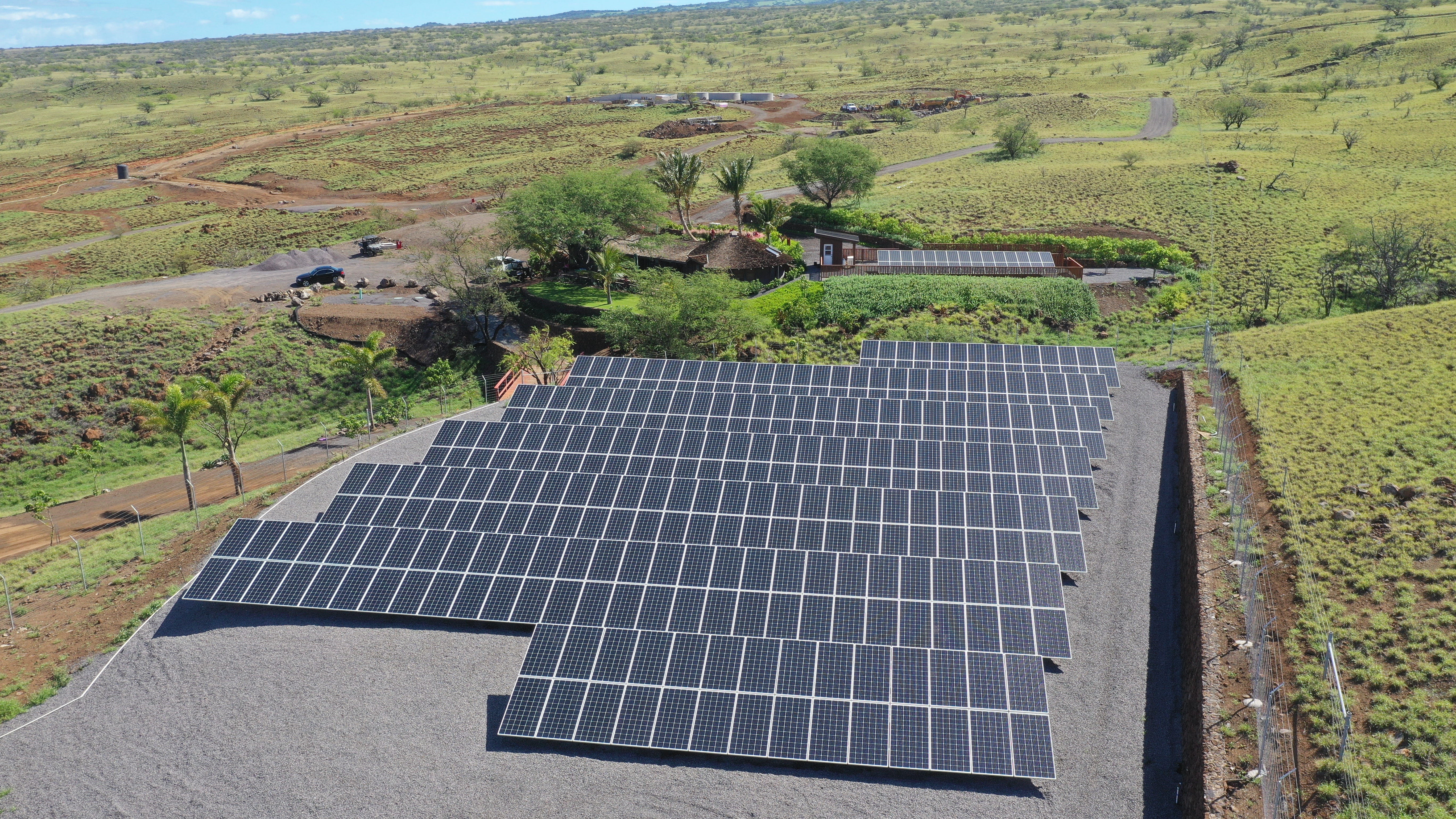February ’21 repeat of an excellent September ’20 Civil Beat article by Claire Caulfield. (Larry note: this is a great report on why the forests play a major role in filling the aquifers in Hawaii)
When Serene Smalley hikes into the Koolau mountains, her goal is to kill as many plants as possible. Armed with a machete and syringes full of herbicide earlier this summer, her sights were set on the mule’s foot fern: a giant Jurassic-looking plant.
Smalley pulled out her cellphone, scrolling through a map app with hundreds of white pins. Each GPS marker pins the suspected location of a mule’s foot fern. A local conservationist spent weeks during the pandemic combing through satellite images and identifying the GPS coordinates of mule’s foot ferns on the mountain range.

Serene Smalley uses a machete to fell branches of the fern before injecting a small amount of pesticide into the base of the plant.
Kuʻu Kauanoe/Civil Beat
To the untrained eye, a mule’s foot fern can look like a native plant, the hapuu fern. “The hapuu is very lacy and pretty,” she said, while the fond of the invasive fern is pointed. “Which reminds me of a snake.”
Some of the offending ferns are right off the Poamoho Ridge Trail near Wahiawa, but to reach others she will have to scale steep slopes in the rain. Smalley invested $60 in specialized shoes that look like hooves and have metal spikes embedded in the soles for traction. They were designed for fishermen and she uses duct tape to stabilize her ankles for the long hike ahead.
For six years Smalley has been scaling mountains, camping on remote peaks and navigating mudslides to kill thousands of non-native plants. She’s one of only about a dozen elite volunteers trusted by the state Department of Land and Natural Resources to assist in the dangerous task of eradicating invasive plants from the nearly 2.2 million acres of protected forests across the state.
“I can definitely see progress,” Smalley said. “It’s very, very rewarding.”

Watersheds provide clean drinking water, carbon sequestration and help prevent floods and droughts. A University of Hawaii study estimated the Koolau Range provides between $7.4 billion and $14 billion in value to the state.
Kuʻu Kauanoe/Civil Beat
These volunteers, along with hundreds of state employees, dozens of environmental groups and an army of local hunters are fighting an uphill battle to protect Hawaii’s forests — and Hawaii’s drinking water.
Here is a link to the rest of this excellent article…


